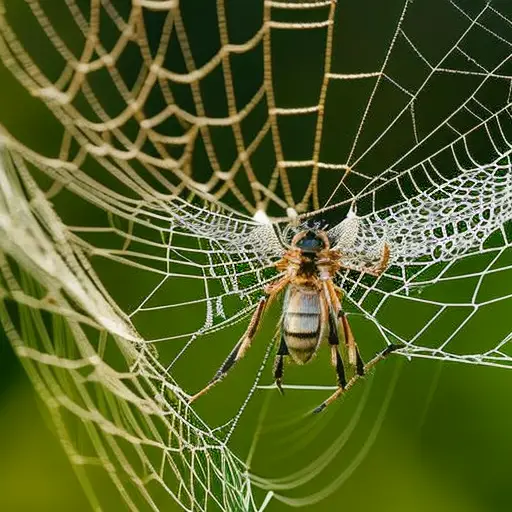Safely Handling and Preparing Fish and Seafood From the Wild

Discover the art of safely handling and preparing fish and seafood straight from the wild. In this informative article, we will unveil the secrets to selecting fresh and healthy catches, mastering cleaning and gutting techniques, and ensuring proper storage and transportation.
With our expert guidance, you will learn the precise cooking methods that will elevate the flavors of wild fish and seafood. Prepare to dive into a world of culinary delights while prioritizing safety and avoiding cross-contamination.
Choosing Fresh and Healthy Fish
When selecting fish, it is essential to carefully choose fresh and healthy specimens. Not only does this ensure the safety and quality of the fish, but it also allows us to benefit from its nutritional value.
Sustainable fishing practices play a crucial role in maintaining the health of fish populations and the marine ecosystem as a whole. By selecting fish that have been caught using sustainable methods, we can support the long-term viability of our oceans and protect vulnerable species.
Fresh fish is not only tastier but also more nutritious. It is an excellent source of high-quality protein, essential omega-3 fatty acids, vitamins, and minerals. These nutritional benefits contribute to heart health, brain function, and overall well-being. By choosing fresh fish, we can maximize the nutritional content of our meals and enjoy the full range of flavors that come with it.
Now that we understand the importance of choosing fresh and healthy fish, let’s move on to the next step in handling our catch: cleaning and gutting.
Cleaning and Gutting the Catch
To properly handle and prepare fish and seafood from the wild, it is crucial to understand the process of cleaning and gutting the catch. Cleaning and gutting fish is a necessary step to ensure the removal of any dirt, bacteria, or parasites that may be present.
The first step is scaling the fish, which involves removing the scales from the skin. This can be done using a scaling tool or a knife, scraping from the tail towards the head. Scaling is important as it improves the texture and taste of the fish, allowing for better cooking results.
After scaling, the next step is removing the fish bones. This can be done by making an incision along the belly of the fish and carefully removing the innards. Once the fish is gutted, the backbone can be removed by cutting along each side of the spine, separating the fillets from the rib cage. This process requires precision to avoid any bone fragments remaining in the fillets.
Cleaning and gutting fish should be done swiftly to prevent bacterial growth. It is important to handle the fish with clean hands and tools to maintain hygiene.
Properly cleaned and gutted fish can then be cooked or stored for later use, ensuring a safe and delicious meal.
Proper Storage and Transportation
Properly storing and transporting fish and seafood from the wild is an essential step in ensuring their freshness and safety. Temperature control plays a crucial role in preserving the quality of these perishable items. The ideal temperature for storing fish and seafood is between 32°F (0°C) and 39°F (4°C). Maintaining this temperature range helps slow down the growth of bacteria and prevents spoilage. It is important to note that different species have varying temperature requirements, so it is advisable to consult specific guidelines for each type of fish or seafood.
Packaging methods also contribute to the preservation of fish and seafood during storage and transportation. Vacuum packaging, which removes air from the package, is a commonly used method. This technique helps to extend the shelf life of fish and seafood by reducing oxygen exposure, which can lead to spoilage. Additionally, the use of insulated coolers or ice is crucial to maintaining the desired temperature during transportation. The packaging should be leak-proof to prevent cross-contamination and ensure the quality of the catch.
Cooking Methods for Wild Fish and Seafood
Continuing the discussion on safely handling and preparing fish and seafood from the wild, it is important to consider the various cooking methods that can be used to enhance their flavor and texture. When cooking wild fish and seafood, two popular methods that can yield delicious results are pan searing and grilling.
Pan searing involves cooking the fish or seafood in a hot pan with a small amount of oil or butter. This method creates a crispy exterior while keeping the inside moist and tender. It is ideal for fillets or smaller seafood items like shrimp or scallops.
Grilling is another great option for cooking wild fish and seafood. The direct heat from the grill imparts a smoky flavor and creates beautiful grill marks. This method works well for whole fish or larger seafood items like lobster tails or squid.
Whether you choose to pan sear or grill your wild fish and seafood, it is important to monitor the cooking time to prevent overcooking. Remember to season the fish or seafood with salt and pepper, and feel free to experiment with different herbs and spices to enhance the natural flavors.
Avoiding Cross-Contamination
When handling and preparing fish and seafood from the wild, it is crucial to prioritize avoiding cross-contamination. Cross-contamination occurs when harmful bacteria from one food item are transferred to another, potentially leading to foodborne illnesses. To prevent bacterial growth and ensure the safety of your fish and seafood, it is important to follow safe handling techniques.
Firstly, always keep raw fish and seafood separate from other foods, especially those that will not be cooked, such as vegetables or ready-to-eat foods. Use separate cutting boards, utensils, and containers for raw and cooked items to avoid any contact between them. Additionally, wash your hands thoroughly with soap and water before and after handling fish or seafood to eliminate any bacteria on your hands.
Furthermore, it is essential to properly clean and sanitize all surfaces and equipment that come into contact with fish or seafood. Use hot, soapy water to wash cutting boards, knives, and utensils, and then sanitize them with a solution of one tablespoon of bleach per gallon of water. This will help eliminate any bacteria that may be present.
Additional Safety Tips and Considerations
To ensure the safe handling and preparation of fish and seafood from the wild, it is imperative to consider additional safety tips and precautions. While following proper hygiene practices and avoiding cross-contamination are crucial, there are other factors to take into account. Here are some key considerations:
-
Seafood Allergies: It is essential to be aware of seafood allergies, as they can cause severe reactions. Before serving or consuming any fish or seafood, inquire about any known allergies among the diners. Ensure that all utensils and surfaces used for preparing seafood are thoroughly cleaned to prevent cross-contact with allergens.
-
Fishing Regulations: Different regions have specific fishing regulations in place to protect fish populations and their ecosystems. It is essential to familiarize yourself with these regulations, including size limits, catch limits, and seasonal restrictions. Adhering to these regulations ensures sustainable fishing practices and preserves the environment.
-
Storage and Shelf-Life: Proper storage is crucial to maintain the quality and safety of fish and seafood. Store them in a refrigerator set at or below 40°F (4°C) and consume them within the recommended shelf-life. Additionally, follow guidelines for freezing fish and seafood to extend their storage time.
Frequently Asked Questions
How Can I Tell if the Fish I Caught Is Safe to Eat?
To determine if the fish you caught is safe to eat, there are several fish quality indicators to consider, such as clear eyes, intact scales, and a fresh smell. Proper storage techniques, such as keeping the fish cold, are also essential.
Should I Freeze the Fish Before Cooking It to Kill Any Potential Parasites?
Freezing techniques can be used to kill potential parasites in fish before cooking. However, it is important to note that thorough cooking is the most effective way to ensure fish is safe to eat.
Can I Use the Same Cutting Board for Fish and Other Foods?
Using separate cutting boards for fish and other foods is crucial to prevent cross-contamination. Proper cleaning and sanitizing of cutting boards is essential to ensure food safety.
Is It Safe to Eat Raw Fish From the Wild?
Consuming raw fish from the wild poses potential health risks due to the presence of bacteria, parasites, and toxins. To mitigate these risks, it is crucial to follow proper handling and storage practices, including thorough cooking and sourcing from reputable suppliers.
What Are Some Common Signs of Fish Spoilage That I Should Look Out For?
Common signs of fish spoilage include a strong, unpleasant odor, slimy texture, discolored or cloudy eyes, and dull, faded gills. These indicators serve as fish quality indicators and should be carefully observed before consumption.
Conclusion
In conclusion, safely handling and preparing fish and seafood from the wild is crucial to ensure the health and well-being of individuals. By following the proper steps of choosing fresh and healthy fish, cleaning and gutting the catch, storing and transporting it correctly, using appropriate cooking methods, and avoiding cross-contamination, the risk of foodborne illnesses can be significantly reduced.
One interesting statistic to note is that according to the Centers for Disease Control and Prevention, around 48 million Americans suffer from foodborne illnesses each year, highlighting the importance of safe food handling practices.





